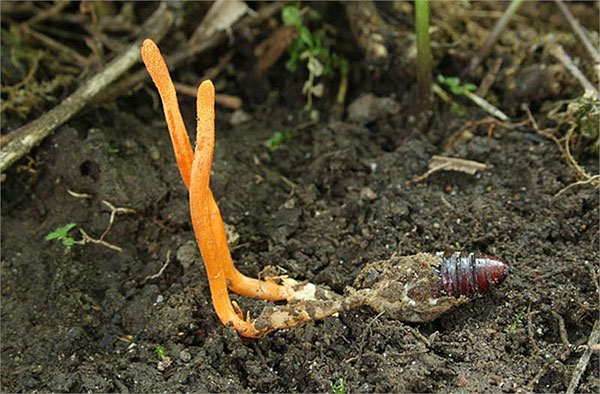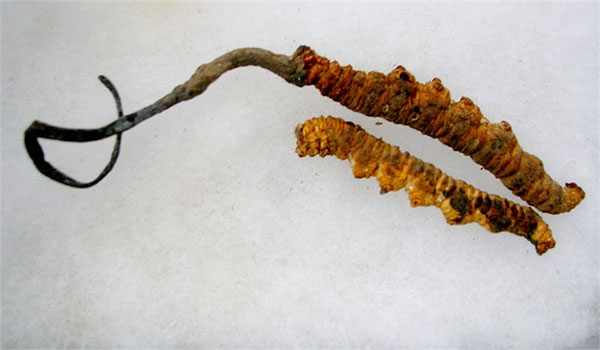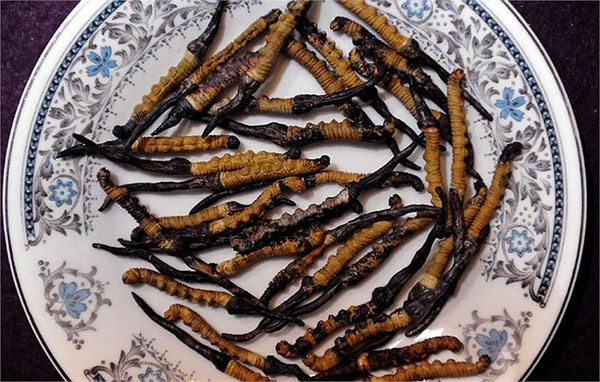The unknown about the deep-grass species
Cordyceps was first discovered and described by a scientist in 1843. It is a parasitic form of a fungal species called Ophiocordyceps sinensis on the larvae of some butterfly species in the genus. Thitarodes Viette.

Cordyceps is considered as a kind of precious medicinal herb, the healing effect, improving health. This fungus is distributed in some parts of Asia and Australia with a diverse center considered East Asia. This species usually grows on the Tibetan, Sichuan, Qinghai, Gansu and Yunnan highlands (China), at altitudes above 4000 - 5000m.

The mechanism of infection of this fungus into the deep body has not been explained by scientists. They hypothesized that this worm might eat fungal spores or that they would get parasitic fungal disease from breathing holes in the skin. In winter, when the weather is cold, the germ of the fungus starts to infect the worm's body. After that, the cells grew, and it was also when the life of this worm ended.
The mushroom drains the substance in the deep body to rise up. The time that people can recognize them often in the summer is warm and rainy. At that time, the fungus was like a young shoots sprouting up the sun and spreading spores. Therefore, this new oriental medicine is called "cordyceps".

Cordyceps has a bizarre shape, just like their birth. A big worm has 20-30 knots. Its head is reddish brown, its tail is like a silkworm tail and has 8 pairs of big and small legs.
When still fresh, deep intestine is full of ivory white. Part leaves with the little finger, 4 - 12cm long. When dried, Cordyceps smells fishy, but when it smells good. Cordyceps has 17 different amino acids, such as D-mannitol, lipids, and many other trace elements such as Al, Si, K, Na .

According to ancient medicine books, cordyceps is considered as a valuable medicine, reinforcing the body, works well with asthma due to damage, kidney damage, impotence, diarrheal, knee fatigue . and children I am malnourished and slow. In particular, it has no side effects for humans and animals. People can make many ways to make food.

Currently, due to hunting and over-exploitation, Cordyceps in nature is in danger of extinction. However, people know how to grow and cultivate this medicine in an industrial environment.
- Anti-flood grass was born
- Two more deep-sea species were discovered
- The species that is capable of 'dying' makes scientists 'headaches'
- The grass may be the noodle Thach Sanh that absorbs CO2
- Maintain the future race from studying grassland wolves
- Condoms thin less than 45 microns extracted from grass
- Many marine species are unknown
- Discover 4 new marine species
- Video: Ghost grass 'devour' the desert house
- Discover a grass that tastes like ... chips
- Overcoming pollution by ... grass
- Squid grass: Great taste
 Why do potatoes have eyes?
Why do potatoes have eyes? 'Tragedy' the world's largest carnivorous life: Death becomes ... public toilet
'Tragedy' the world's largest carnivorous life: Death becomes ... public toilet Tomatoes were once considered 'poisonous' for 200 years
Tomatoes were once considered 'poisonous' for 200 years Detecting microscopic parasites on human face
Detecting microscopic parasites on human face